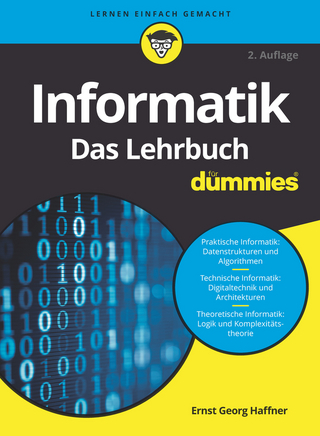
Bounded Queries in Recursion Theory
Seiten
2013
Springer-Verlag New York Inc.
978-1-4612-6848-2 (ISBN)
Springer-Verlag New York Inc.
978-1-4612-6848-2 (ISBN)
The natural measure of difficulty of a function is the amount of time needed to compute it (as a function of the length of the input). In recursion theory, by contrast, a function is considered to be easy to compute if there exists some algorithm that computes it.
One of the major concerns of theoretical computer science is the classifi cation of problems in terms of how hard they are. The natural measure of difficulty of a function is the amount of time needed to compute it (as a function of the length of the input). Other resources, such as space, have also been considered. In recursion theory, by contrast, a function is considered to be easy to compute if there exists some algorithm that computes it. We wish to classify functions that are hard, i.e., not computable, in a quantitative way. We cannot use time or space, since the functions are not even computable. We cannot use Turing degree, since this notion is not quantitative. Hence we need a new notion of complexity-much like time or spac~that is quantitative and yet in some way captures the level of difficulty (such as the Turing degree) of a function.
One of the major concerns of theoretical computer science is the classifi cation of problems in terms of how hard they are. The natural measure of difficulty of a function is the amount of time needed to compute it (as a function of the length of the input). Other resources, such as space, have also been considered. In recursion theory, by contrast, a function is considered to be easy to compute if there exists some algorithm that computes it. We wish to classify functions that are hard, i.e., not computable, in a quantitative way. We cannot use time or space, since the functions are not even computable. We cannot use Turing degree, since this notion is not quantitative. Hence we need a new notion of complexity-much like time or spac~that is quantitative and yet in some way captures the level of difficulty (such as the Turing degree) of a function.
A: Getting Your Feet Wet.- 1 Basic Concepts.- 2 Bounded Queries and the Halting Set.- 3 Definitions and Questions.- B: The Complexity of Functions.- 4 The Complexity of CnA.- 5 #nA and Other Functions.- C: The Complexity of Sets.- 6 The Complexity of ODDnA and MODmnA.- 7 Q Versus QC.- 8 Separating and Collapsing Classes.- D: Miscellaneous.- 9 Nondeterministic Complexity.- 10 The Literature on Bounded Queries.- References.
| Reihe/Serie | Progress in Computer Science and Applied Logic ; 16 |
|---|---|
| Zusatzinfo | XIII, 353 p. |
| Verlagsort | New York |
| Sprache | englisch |
| Maße | 155 x 235 mm |
| Themenwelt | Mathematik / Informatik ► Informatik ► Theorie / Studium |
| Mathematik / Informatik ► Mathematik ► Analysis | |
| Mathematik / Informatik ► Mathematik ► Angewandte Mathematik | |
| ISBN-10 | 1-4612-6848-6 / 1461268486 |
| ISBN-13 | 978-1-4612-6848-2 / 9781461268482 |
| Zustand | Neuware |
| Haben Sie eine Frage zum Produkt? |
Mehr entdecken
aus dem Bereich
aus dem Bereich
Grundlagen – Anwendungen – Perspektiven
Buch | Softcover (2022)
Springer Vieweg (Verlag)
34,99 €
Eine Einführung in die Systemtheorie
Buch | Softcover (2022)
UTB (Verlag)
25,00 €


